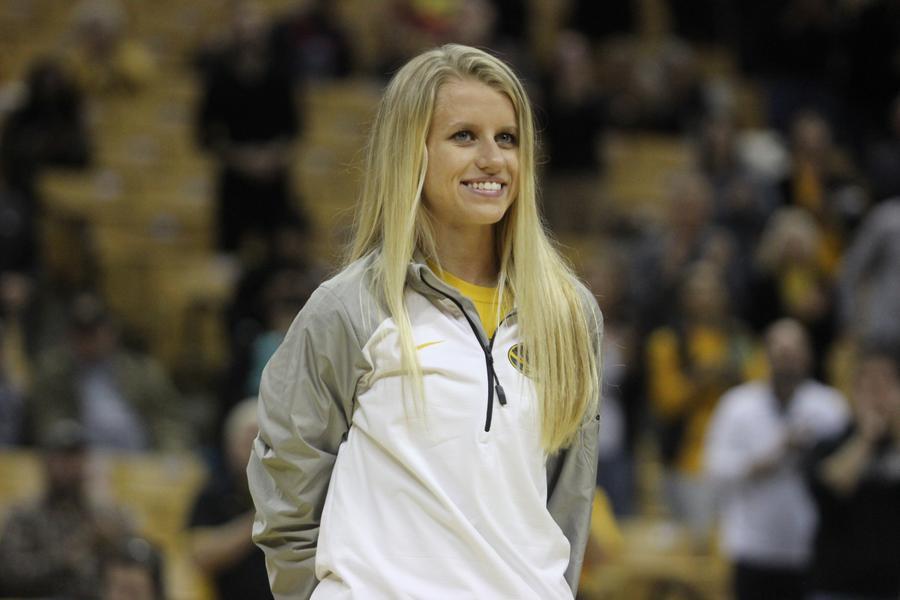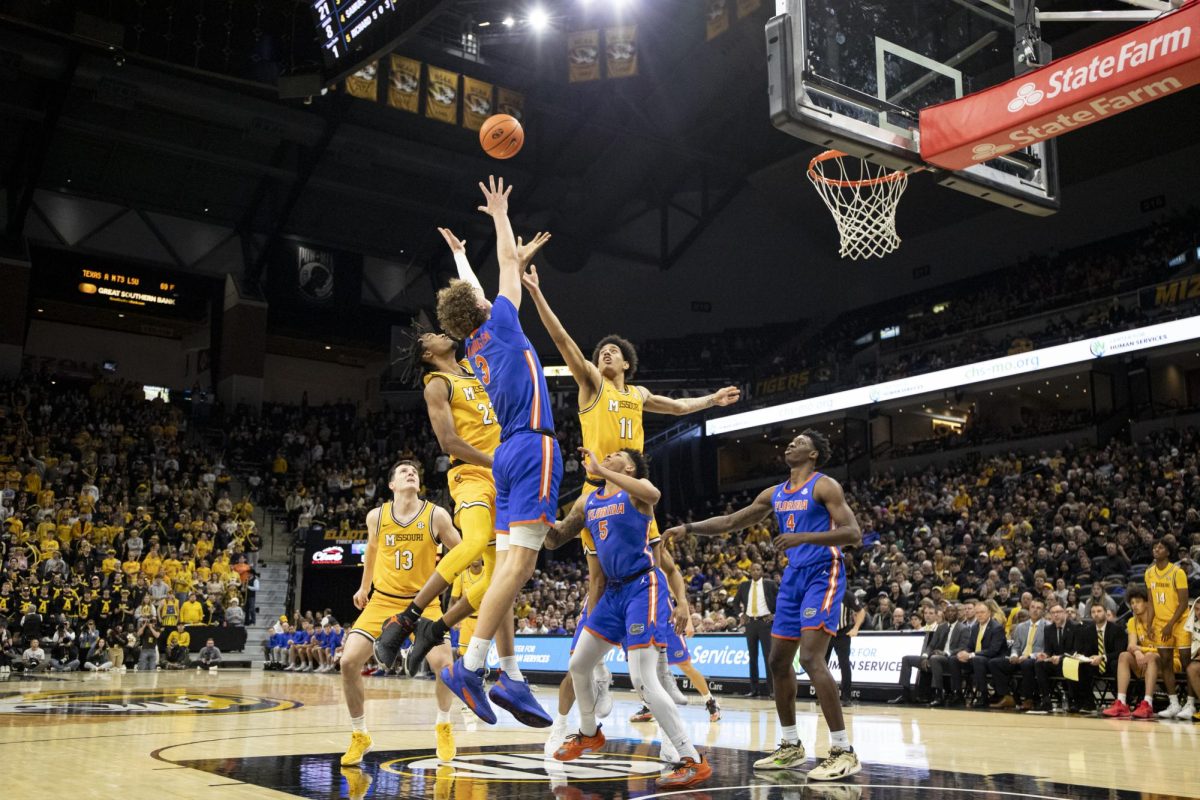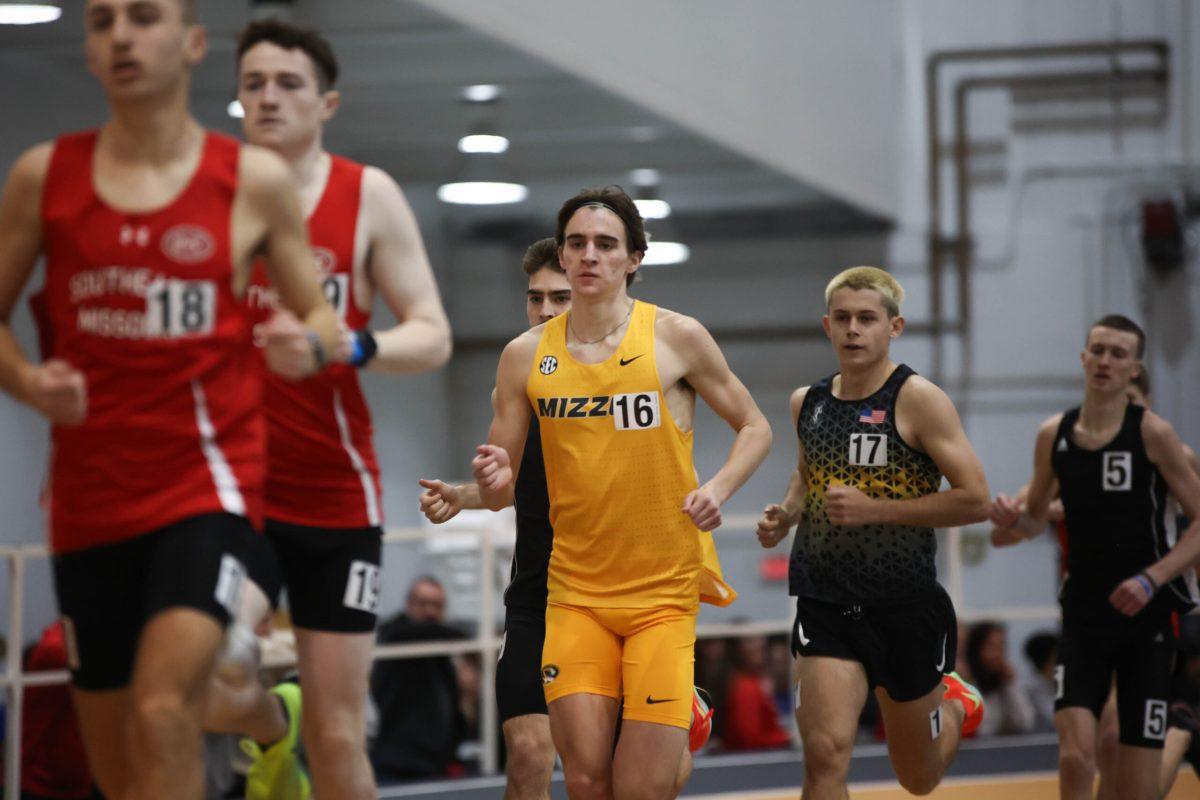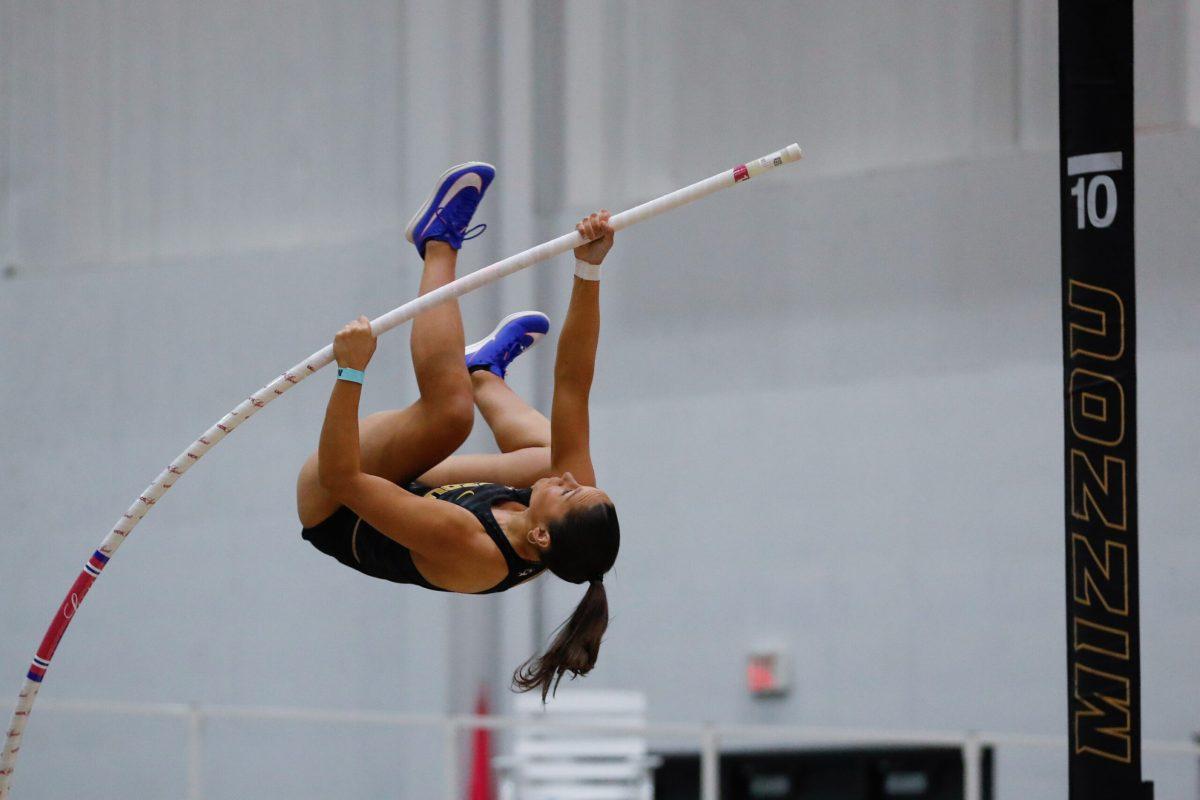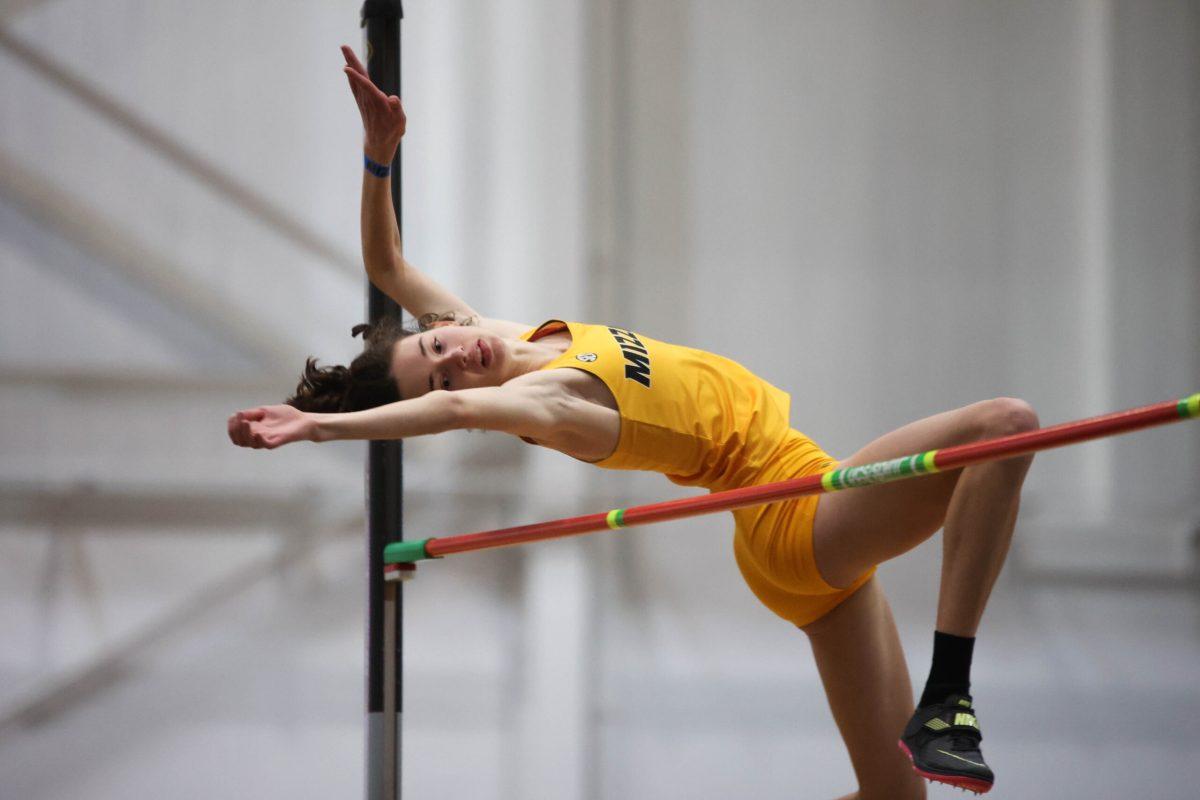Only a few laps remained in the 5K at the NCAA Indoor Track and Field Championships, and Missouri junior Karissa Schweizer was settled in third place behind Notre Dame’s Anna Rohrer and Michigan’s Erin Finn. The trio had been battling it out all race, and no one seemed to have the advantage.
With 400 meters left, Schweizer left the rest of the field behind to capture her second national title in 15:19.14. The 5K win made Schweizer the first female two-time national champion and the first female multi-sport national champion in Mizzou Athletics history.
With less than half a mile to go in the NCAA Cross Country National Championships on Nov. 19, Schweizer was in a battle for third. Analysts at Flotrack.org had predicted she wouldn’t even finish in the top five. As she battled for third in a hard-fought race, she decided to throw one last gear change in. She pushed past everyone else, including Finn and Rohrer, to capture her very first national championship.
Heading into the 2017 championships, Schweizer was ranked fourth in the 5K with a personal best of 15:37.4 and 11th in the 3K with a personal best of 9:06.6. She was almost able to capitalize in the 3K and win a third title, but she fell just short to finish in second place. She left the meet with a personal best in the 5K and her second national title.
Schweizer made the race seem effortless, but there were weeks of preparation that led to her historic victory.
####The Decision
Heading into the championships, Schweizer was a qualifier in three events — the mile, 3K and 5K — so she had to decide which races she wanted to run in. While Schweizer ran the mile and 3K during the SEC Championships and won gold in both, it was never in the plan for her to run the mile at the nationals, assistant coach Marc Burns said.
“It was an easy decision,” Burns said. “It is just scheduling. She honestly has a mix in all three races, but she truly has a chance in both [the 5K and 3K]. It has been a while since the 5K, though.”
While the decision was made by the coaching staff, the staff does talk to the athletes about the races they would like to run, especially with races of this magnitude.
“I had a pretty big role in the decision,” Schweizer said. “They let me just do the mile and 3K at SECs, so they asked me what I wanted, and it was an easy decision.”
####The Plan
Burns describes Schweizer’s kick at the end of a race as one of the best in the country. It is what won her both national championships and almost a third one in the 3K.
“We want her to be comfortable early on, close to the leader, but not leading,” Burns said. “She has to save all the emotional power for the second half of the race, save it for the last 600, 400. It is not win or go home. She is capable of winning, but she kind of has to run a perfect race. It depends if she is feeling good that day or not.”
Schweizer’s impeccable drive led to the plan for the 5K. All she had to do, Burns said, was just sit with the lead pack and kick. Her goal was to just race and be a competitor, Schweizer and Burns said.
She executed as planned, as she was within a second of the leaders through 4600 meters. Then, she jumped ahead and finished the last 400 meters in 65 seconds, beating the next finisher by eight seconds.
“What is exciting about these races is it is just about being able to race,” Burns said. “Nothing else matters. Time means nothing. She can race with anyone in the country. She has the best kick in the field; she outkicked a 2:08 800-meter runner the other week. She is a competitor. I describe it as a chess match; just get her in the right place and right time and give her a chance to win.”
If a race is a chess match, it seems that Schweizer has the complete flexibility of a queen. She has the endurance to run with any distance, the strength to compete with any runner and is ready for anything.
“I try to really focus on the race aspect,” Schweizer said. “I will respond to any starting pace. If it comes out fast or slow, I am ready to go with anything and compete. I will make a move around 600 or whenever I feel good.”
Before races, there is not much talking between Schweizer and Burns. Schweizer prefers not to talk about race plans and just set in mentally. Burns has praised Schweizer’s poise before and during races.
####The Training
After the two victories at SEC Championships, Karissa knew she had two weeks to prepare for the NCAA Championships. She and the team spent Feb. 26, the Sunday following the SEC Championships, traveling back to Columbia, giving her an unusual off day off. Schweizer usually likes to just relax and catch up on her studies on off days, Burns said. On Monday, the training began.
During the season, Schweizer only ran one 5K on Dec. 3 at the Boston University season opener. The plan was to get Schweizer to run more miles and 3Ks throughout the season to make the 5K easier for her when it came time for her to run it on the national stage, Burns said. He wanted Schweizer to get the idea that running a fast 5K would seem so much slower and make the race come smoother to her.
Two weeks ahead of the National Championships, both Schweizer and Burns knew what type of workouts she needed to get ready.
“She had not run a 5K in a while, so I knew I wanted to start with a 5K-specific workout to start training,” Burns said. “Then, I wanted to do something faster. The next week, I wanted something light then just to recover.”
As evidenced by her national championship in cross-country, Schweizer is a skilled long distance runner, as she won 6K at nationals. In comparison, training for the 5K race is not much different, but there are some key distinctions between the two regimens.
“We usually get on grass more during cross country season,” Burns said. “There is a lot of carryover from one to the other. We like to put more emphasis on changing gears [during track season]. You run up against more track-orientated people during track. It changes the dynamic. That is why we like to spend the early years of careers and have them run shorter distance to give them the keys to win a national title.”
Schweizer took those keys and drove away with her two national titles.
Schweizer is often found training on her own, though she does like to run with sophomore Jamie Kempfer for longer workouts. When it comes to track workouts, she is either on her own or paired with a younger member of the men’s team to help her through her workouts. The team will usually have a redshirt member of the men’s team help pace her during workouts, Burns said.
“There is nothing harder than doing a track workout on your own,” Burns said. “It helps you with rhythm, toughness. There is a huge benefit from it.”
To recover, one thing Schweizer specifically mentioned she loves to do is the AlterG treadmill.
An AlterG machine is an anti-gravity machine that takes away part of Schweizer’s body weight to let her run lighter and have less wear on her body. The runner is locked inside a type of chamber from the waist down and can run on 20 to 100 percent of their normal body weight. It is a relatively new technology, but it has become a necessity for some athletes in order to recover faster. Burns said Schweizer usually runs between 85 to 90 percent of her body weight when she uses the machine. The machine prevents the body from fully pounding on the ground to stop the wear it can have on the body. AlterG is often used to rehabilitate injured patients and athletes.
Schweizer tries to get a workout in on the AlterG once a week, and Burns said she has her own personal one in the track and field offices.
“We got her own AlterG last year,” Burns said. “The women’s team likes to use it a lot. She has always been really healthy her entire career. [The use of AlterG] adds up over the season’s wear and tear. Doing this lets her run fast when she needs to.”
While Schweizer’s training never changes significantly at any point in the season, her training is altered depending on whether she is running just one race or if she is running two or three. Heading into nationals, Burns knew she had never ran a 5K and 3K double this season but was confident in her ability to compete in both.
“She has a unique ability to recover,” Burns said. “She does not do a lot of back-to-back workouts that we like to do to prepare athletes for doubles. She just recovers fast. She did just as well day one of the SEC Championships than she did day two.
####The Execution
The plan for Schweizer was set; she knew what she had to do entering Friday’s race. It was a relatively simple plan and, in theory, seemed like an easy one to execute. All she had to do was be there in the end, and it was hers to lose.
She came out in the middle of the pack, a few seconds off of the leaders. Rohrer came out fast, leading the pack in the first 400 meters with a 72-second 400. Schweizer was not too far off with a 74.
She kept this distance through 800 meters with a 2:28.09 split. It seemed as though Rohrer and Finn wanted this race to come out fast, as they both ran a 2:26 split through a half-mile.
At the 1,600-meter mark, the leaders began to separate themselves from the pack, and only a few competitors seemed to have a chance to win. Schweizer and another runner were two seconds off of Rohrer and Finn, as they came through 1,600 with a 4:53 to Schweizer’s 4:55.
Schweizer had caught up 400 meters later at the 2,000-meter mark with a time of 6:07, and the top three were all lined up with each other. Rohrer, Finn and Schweizer were still on one another’s shoulders preparing for the final push with them all hitting 12:20 for the 4,000-meter mark.
Just as Burns had planned, Schweizer thrust it into gear with 400 meters remaining. She dropped a 33-second first 200, then a 32-second last 200 to capture the 5K title.
Now, Schweizer will look to put in a strong three weeks of training as she prepares to add to her trophy case later this spring when outdoor season hits.
Regardless of the sport or season, Schweizer heads into her races appreciating the fact that she is competing at this level.
“I am really just happy to be here,” Schweizer said. “I want to go out there and see where I place. I want to walk off the track and feel I did my best.”
_Edited by Eli Lederman | elederman@themaneater.com_

